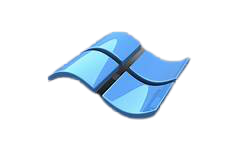Description
Duration: 5 days
This course provides experienced Exchange Server administrators with the knowledge to design and implement an Exchange Server 2016 messaging environment. Students will learn how to design and configure advanced components in an Exchange Server 2016 deployment such as site resiliency, advanced security, compliance, archiving, and discovery solutions. In addition, students will learn about coexistence with other Exchange organizations or Exchange Online, and migration from previous versions of Exchange Server. The course will provide guidelines, best practices, and considerations that will help students optimize their Exchange Server deployment.
This course is intended for IT professionals who are experienced messaging administrators, messaging architects, or consultants. This course is designed for professionals in an enterprise environment who are responsible for designing and deploying Exchange Server 2016 solutions, including environments that contain previous versions of Exchange Server or Exchange Online. Students are expected to have experience with Exchange Server 2016 or previous versions of Exchange Server.
This course is also intended as preparation material for IT professionals who are looking to take the 70-345: Designing and Deploying Microsoft Exchange Server 2016 exam as part of the requirement for the MCSE: Microsoft Exchange Server 2016 certification.
After completing this course, students will be able to:
- Plan for Exchange Server deployments.
- Plan and deploy Exchange Server 2016 Mailbox services.
- Plan and deploy message transport.
- Plan and deploy client access.
- Design and implement high availability.
- Maintain Exchange Server 2016.
- Design messaging security.
- Design and implement message retention.
- Design messaging compliance.
- Design and implement messaging coexistence.
- Upgrade to Exchange Server 2016.
- Plan a hybrid Exchange Server deployment.
Prerequisites
Before attending this course, students must have:
- A+ certification or equivalent knowledge.
- Network+ certification or equivalent knowledge.
- Completed Course 2028A, Basic Administration of Microsoft Windows 2000, or have equivalent knowledge of administrative tasks.
In addition to professional experience, students who attend this training should already have the following technical knowledge:
Attended course 20345-1A: Administering Exchange Server 2016, or have equivalent knowledge.
Minimum two years of experience working with any version of Exchange Server.
Minimum of six months of experience working with Exchange Server 2013 or Exchange Server 2016.
Minimum of two years of experience administering the Windows Server 2012 R2.
Minimum of two years of experience working with Active Directory Domain Services (AD DS).
Minimum of two years of experience working with name resolution, including Domain Name System (DNS).
Experience working with certificates, including public key infrastructure (PKI) certificates.
Experience working with Windows Powershell.
What’s included?
- Authorized Courseware
- Intensive Hands on Skills Development with an Experienced Subject Matter Expert
- Hands-on practice on real Servers and extended lab support 1.800.482.3172
- Examination Vouchers & Onsite Certification Testing- (excluding Adobe and PMP Boot Camps)
- Academy Code of Honor: Test Pass Guarantee
- Optional: Package for Hotel Accommodations, Lunch and Transportation
With several convenient training delivery methods offered, The Academy makes getting the training you need easy. Whether you prefer to learn in a classroom or an online live learning virtual environment, training videos hosted online, and private group classes hosted at your site. We offer expert instruction to individuals, government agencies, non-profits, and corporations. Our live classes, on-sites, and online training videos all feature certified instructors who teach a detailed curriculum and share their expertise and insights with trainees. No matter how you prefer to receive the training, you can count on The Academy for an engaging and effective learning experience.
Methods
- Instructor Led (the best training format we offer)
- Live Online Classroom – Online Instructor Led
- Self-Paced Video
Speak to an Admissions Representative for complete details
| Start | Finish | Public Price | Public Enroll | Private Price | Private Enroll |
|---|---|---|---|---|---|
| 5/12/2025 | 5/12/2025 | ||||
| 6/2/2025 | 6/2/2025 | ||||
| 6/23/2025 | 6/23/2025 | ||||
| 7/14/2025 | 7/14/2025 | ||||
| 8/4/2025 | 8/4/2025 | ||||
| 8/25/2025 | 8/25/2025 | ||||
| 9/15/2025 | 9/15/2025 | ||||
| 10/6/2025 | 10/6/2025 | ||||
| 10/27/2025 | 10/27/2025 | ||||
| 11/17/2025 | 11/17/2025 | ||||
| 12/8/2025 | 12/8/2025 | ||||
| 12/29/2025 | 12/29/2025 | ||||
| 1/19/2026 | 1/19/2026 |
Curriculum
Module 1: Planning Exchange Server 2016 deployments
This module explains the requirements and considerations for planning an Exchange Server deployment.
Lessons
New features in Exchange Server 2016
Gathering business requirements for an Exchange Server 2016 deployment
Planning for an Exchange Server deployment
Designing a Unified Messaging (UM) deployment
Lab: Planning Exchange Server 2016 deployments
Evaluating an existing messaging infrastructure
Identifying requirements
Discussion: Deployment design for Exchange Server 2016
After completing this module, students will be able to:
Describe the new features in Exchange Server 2016.
Describe how to gather business requirements for an Exchange Server 2016 deployment.
Plan for an Exchange Server 2016 deployment.
Design a UM deployment.
Module 2: Planning and deploying Exchange Server 2016 Mailbox services
This module explains how to plan and deploy Exchange Server hardware, virtualization, mailbox databases, and public folders.
Lessons
Planning Exchange Server hardware requirements
Planning Exchange Server for virtualization and Microsoft Azure integration
Planning and implementing public folders
Lab: Planning and implementing Exchange virtualization, mailbox databases, and public folders
Planning for virtualization
Planning for mailbox databases
Implementing mailbox databases
Planning and implementing public folders
After completing this module, students will be able to:
Plan for the Exchange Server hardware requirements.
Plan Exchange Server for virtualization and Azure integration.
Plan and implement public folders.
Module 3: Planning and deploying message transport
This module explains how to plan and implement mail routing internally from and to the Internet, and transport-related tasks in the organization.
Lessons
Designing message routing
Designing transport services
Designing the message-routing perimeter
Designing and implementing transport compliance
Lab: Planning and deploying message transport
Planning for a redundant and secure message transport
Planning for transport compliance
Implementing transport compliance
After completing this module, students will be able to:
Design message routing.
Design transport services.
Design message routing in a perimeter network.
Design and implement transport compliance.
Module 4: Planning and deploying client access
This module explains how to plan for client connectivity and client access in Exchange Server 2016. This module also describes how to implement Microsoft Office Online Server, and the coexistence of SharePoint 2016 with Exchange.
Lessons
Planning for Exchange Server 2016 clients
Planning for client access
Planning and implementing Office Online Server
Planning and implementing coexistence of SharePoint 2016 with Exchange
Designing external client access
Lab: Planning and deploying client access solutions
Planning and configuring namespaces
Planning and configuring client access services options
Planning and deploying Office Online Server
Planning and implementing reverse proxy
After completing this module, students will be able to:
Plan for Exchange 2016 Server clients.
Plan for client access.
Plan and implement Office Online Server.
Plan and implement SharePoint 2016 and with Exchange Server 2016 coexistence.
Design external client access.
Module 5: Designing and implementing high availability
This module explains how to design and implement a highly available solution for Exchange Server 2016.
Lessons
Planning high availability for Exchange Server 2016
Planning for load balancing
Planning for site resilience
Lab: Designing and implementing site resiliency
Creating a lag database copy
Recovering data from a lagged database copy
Implementing site resilience
Validating site resilience
After completing this module, students will be able to:
Plan high availability for an Exchange Server 2016 deployment.
Plan for load balancing in an Exchange Server 2016 deployment.
Plan for site resilience in an Exchange Server 2016 deployment.
Module 6: Maintaining Exchange Server 2016
This module explains how to maintain Exchange Server 2016 using Managed Availability and Desired State Configuration (DSC).
Lessons
Using Managed Availability to improve high availability
Implementing DSC
Lab: Maintaining Exchange Server 2016


